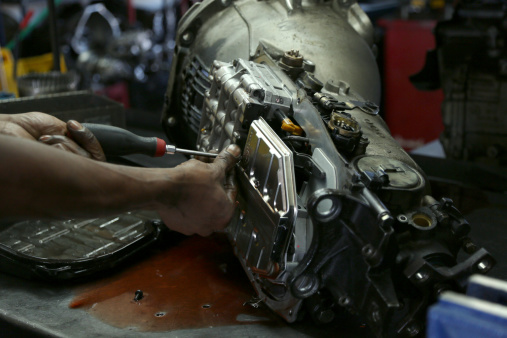October 27, 2024
WHAT IS A SEALED TRANSMISSION?
A sealed transmission refers to a type of transmission that is designed to be completely sealed off from the external environment. This means that the transmission has a closed housing that does not allow any external contaminants, such as dust, dirt, or water, to enter the system.
Sealed transmissions are commonly found in modern vehicles and are typically designed to be maintenance-free. They are often filled with a specific type of transmission fluid that is designed to last for the life of the vehicle. This eliminates the need for regular transmission fluid changes and reduces the risk of internal damage due to contaminated fluid.
The use of a sealed transmission can help to improve the overall reliability and longevity of a vehicle’s transmission system. However, it is important to note that if a sealed transmission does develop a problem, it may require specialized tools and expertise to diagnose and repair the issue.
Why Do We Replace Transmission Fluid?
Transmission fluid plays a critical role in the operation and longevity of a vehicle’s transmission system. Here are the main reasons why it’s important to replace transmission fluid:
- Lubrication: Transmission fluid helps lubricate the moving parts within the transmission, reducing friction. Over time, the fluid can break down and lose its effectiveness, which can cause parts to wear out more quickly.
- Cooling: The transmission fluid also helps dissipate heat generated by the transmission, preventing it from overheating. As the fluid ages, it may not perform this function as efficiently, which can lead to transmission overheating and damage.
- Contaminant Removal: As the fluid circulates, it can pick up debris and contaminants, such as metal shavings or dirt, from the transmission. Over time, this can affect the performance of the transmission, and if not replaced, it can cause internal damage.
- Maintaining Smooth Shifting: Fresh transmission fluid ensures smooth shifting of gears. Old fluid can lead to rough or delayed shifting, slipping, or even failure to engage gears.
- Preventing Corrosion: Transmission fluid contains additives that help prevent corrosion of the transmission’s internal components. As the fluid ages, these additives can break down, allowing corrosion to occur.
- Improving Performance: Replacing old fluid can help restore the transmission’s overall performance, improving fuel efficiency, shifting behavior, and responsiveness.
For most vehicles, it’s recommended to replace the transmission fluid every 30,000 to 60,000 miles, but it’s always best to check the manufacturer’s specific guidelines for your car.
How Do We Replace Sealed Transmission Fluid?
Replacing the fluid in a sealed transmission can be a more complicated process than changing the fluid in a traditional, non-sealed transmission. Sealed transmissions are designed to be maintenance-free and typically do not have a dipstick or fill tube for adding or checking the transmission fluid level. Instead, the fluid level is typically checked and filled through a fill port located on the side of the transmission.
To replace the fluid in a sealed transmission, the vehicle may need to be lifted and supported on a hoist or jack stands, depending on the make and model of the vehicle. The technician will need to locate the fill port on the transmission, which may require the removal of a cover or other components to access.
Once the fill port is located, the technician will need to use a specialized tool to add the new fluid to the transmission. This may involve using a pressurized system to force the fluid into the transmission, or using a tool that attaches to the fill port and allows the fluid to be added under pressure.
It is important to use the correct type of transmission fluid when replacing the fluid in a sealed transmission. The manufacturer’s specifications should be followed carefully to ensure that the correct type of fluid is used and the correct amount is added to the transmission.
Because of the specialized tools and expertise required to replace the fluid in a sealed transmission, it is typically recommended that this service be performed by a qualified technician with experience working on sealed transmissions.
Can You Check the Transmission Fluid Yourself?
In a sealed transmission, it is not typically possible for a vehicle owner to check the transmission fluid level themselves, as there is no dipstick or fill tube accessible to the owner. Sealed transmissions are designed to be maintenance-free, and the fluid level is typically checked and filled through a fill port located on the side of the transmission.
However, some modern vehicles may have a sensor or display that allows the driver to check the transmission fluid level electronically. This information may be accessible through the vehicle’s onboard computer system or displayed on the dashboard.
If your vehicle does not have an electronic system for checking the transmission fluid level, it is generally recommended that you have the fluid level checked and serviced by a qualified technician. The technician will have the tools and expertise necessary to properly check the fluid level and add or replace fluid as needed.
It is important to follow the manufacturer’s recommended service interval for checking and replacing the transmission fluid. Neglecting to check or replace the fluid as recommended can lead to serious damage to the transmission and potentially result in costly repairs or replacement.


